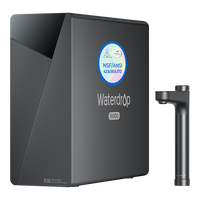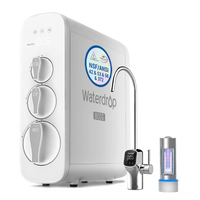Our planet and humanity currently face several challenges, including climate change, water scarcity, inequality, and hunger. A global approach is the most effective way to resolve most of these issues. We must collectively promote sustainable development, focusing on environmental balance, social improvement, and economic growth.
Sustainable development can be described as a continuous and controlled social change occurring on global, regional, and local scale. The goal of sustainable development is to create opportunities for an improved life for both the present and coming generations. Therefore, we can only attain sustainable development when we use the limited natural resources rationally.
Sustainable Development Explained
Sustainable development is an organizational strategy that allows society to exist and thrive for longer without compromising on the availability and accessibility of essential natural resources for coming generations.
Sustainable development is only attainable when we preserve the environment and natural resources while ensuring economic and social equality.
Several cultures have adopted this concept since civilization. Also called environmentally sustainable economic growth, in some cases, the aim has always been to balance nature, humanity, and the economy.
The 17 Global Goals for Sustainable Development
The United Nations came up with
17 Sustainable Development Goals (SDGs) to help fight the global problems humanity faces. However, these goals are achievable only if future decision-makers and stakeholders prioritize them as important.
SDG 1 – No poverty: ensuring everyone can access basic human needs, including sanitation, education, and health.
SDG 2 – Zero hunger: ensuring sustainable food production and providing food and humanitarian relief to everyone.
SDG 3 – Good health and well-being: providing better, more accessible health systems that improve life expectancy.
SDG 4 – Quality education: providing inclusive education that promotes upward social mobility and eradication of poverty.
SDG 5 – Gender equality: equal access to opportunities and education irrespective of gender. Advancement of equality laws and fairer representation of women.
SDG 6 – Clean water and sanitation: ensuring the billions of people who lack clean water and sanitation can access them.
SDG 7 – Affordable, clean energy: providing access to renewable, safe, and easily accessible energy sources.
SDG 8 – Decent work and economic growth: providing jobs for everyone to improve the quality of living and drive sustainable economic growth.
SDG 9 – Industry, innovation, and infrastructure: providing job opportunities and income through innovation.
SDG 10 – Reduced inequalities: cutting down on income inequality and other forms of inequalities between and within countries.
SDG 11 – Sustainable cities and communities: improving the safety, inclusiveness, resilience, and sustainability of societies and cities.
SDG 12 – Responsible consumption and production: reversing the present consumption trends and championing a more sustainable future.
SDG 13 – Climate action: improved regulation and effective reduction of emissions, and more efforts to promote renewable energy.
SDG 14 – Life below water: improved conservation efforts, promoting marine diversity, and better regulation of fish practices.
SDG 15 – Life on land: Reversing artificial deforestation and desertification to improve the sustainability of lives.
SDG 16 – Peace, justice, and strong institutions: ensuring equal access to justice through strong institutions and inclusive societies.
SDG 17 – Partnerships for the goals: strengthen global partnerships to attain sustainable development goals.
Global Water Resource Crisis
Easy access to safe and clean water is seen as a norm in most parts of the world. But the truth is that the world is currently dealing with a severe issue of water scarcity; even developed countries with adequate water resources are not left out.
There are a few reasons behind this, but the most important is climate change. Alongside other human factors, climate change has increasingly prevented people from accessing clean and safe drinking water.
Water pollution occurs via different sources and activities. These include wastewater from industrial mills, residual sludge, and others. Industrial waste comprises pollutants like nitrates, mercury, and lead from industrial companies that end up in fresh water and the sea. These further aggravate the existing problem of low quality and quantity of water available to people for drinking, cooking, handwashing, bathing, and agriculture.
Water Filtration Systems Are Eco-Friendly Solutions
We churn out billions of plastic bottles annually, with most of them ending up in oceans and landfills. The poor biodegradability of these plastic products means they stay for a very long time on the planet - up to several decades.
Water bottles are a leading contributor to plastic pollution. Therefore, installing a
household water filter eliminates the need for water bottles and reduces the resulting plastic pollution. We are not only saving money but also protecting the planet.
Water filters are pretty affordable, especially considering the cost per gallon. You are paying less to enjoy cleaner and healthier water - a crucial requirement for a quality life. You can cut your monthly bills by opting for filtered water instead of bottled water. The unending supply of filtered water is another significant reason to choose it over bottled water.
Click to learn more about
RO water filters.
In Conclusion
Sustainability offers a wide range of long-term and short-term benefits. It is impossible to keep the earth healthy and safe without making more sustainable choices. We must eliminate harmful processes and replace them with healthier and safer options. Otherwise, we might be on the way to exhausting fossil fuels and forcing tons of animal species into extinction. The damage to the atmosphere from our hazardous activities can also be hugely detrimental in the long run.
If adequately implemented, global sustainability plans will ensure clean air and a non-toxic atmosphere for everyone. We can grow our reservoir of natural resources for future use, ensure optimal water quality and sanitation, and stay healthier and happier overall.












































































